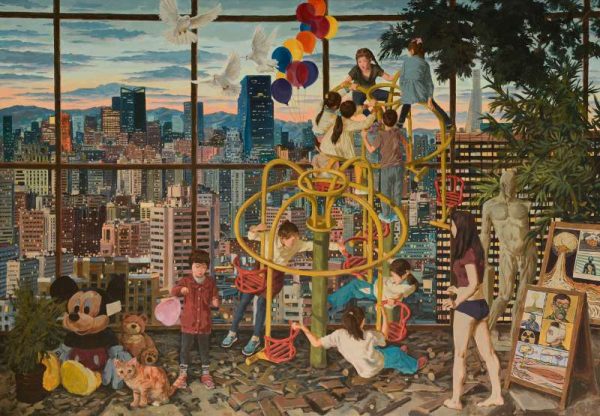It’s no secret that purchasing art requires (relatively) deep pockets. Additionally, there are costs to maintain a collection once it’s been amassed.
There’s no hard and fast formula for figuring out how much one should expect to spend on the myriad associated costs, but experts cite figures from between 1% and 2% of the overall value of a collection to as high as 15% to 20%. The variation is due to the wide range of services—shipping, installation, insurance, security, appraisals, storage, and conservation—that may or may not be required of a particular collection.
Novice
A friend’s younger cousin just got an MFA from Yale. You go to her studio and pick up three mid-size photographs for only $500 each. You’re thrilled until you bring them to get framed and realize you’ll be shelling almost as much on the frames as you did on the works themselves. A few months later, you find yourself in a gallery, smitten with a large multi-media assemblage. Relieved you don’t have to frame this one, you commit to it on the spot, not realizing until it’s actually inside your apartment that you need to hire a specialized art installer to hang it for you. Almost immediately, you’re spending another $500 or so getting it on the wall. You aren’t yet making art-related upgrades to your living space or shelling out for storage, but still, the after-purchase costs sometimes add up.

Serious
A collection of a hundred or more works will likely be spread over a few different homes and specialized art storage spaces. Opting for a store-it-yourself option would leave you without proper security or temperature control, and the possibility of having it just yards away from flammables, combustibles, or otherwise suboptimal neighbors.
If you opt for specialized fine art storage in an urban city, you’ll pay between $10 and $12.50 per square foot per month for a private space. If you’re willing to place your collection outside of the city and in a shared, rather than private, space, the rate can drop to as little as $5 per square foot. For the works you’re surrounded with, the homes may require adjustments such as special lighting, security, and UV window protection, all of which can run into the six digits, just for standard, indoor art works such as paintings or sculptures, a professional designer who specializes in fine art placement.

Veteran
Then there are the handful of collectors whose holdings are so vast and prestigious they’re compelled to share them, usually through the building of a private foundation or museum.
As a museum or foundation space goes under construction, the work has to remain secure. Collectors of this caliber are likely to make use of freeports, which allow the import and storage of works without tax liability, and promise the utmost confidentiality and discretion. This level of collector likely also has her or his own art advisor, and a dedicated staff for collection management and curation, labor costs that can quickly climb into the hundreds of thousands of dollars, at least, per year, based on typical salaries for these professions.

Established and veteran collectors are also likely hiring conservators before making major purchases. These services run anywhere from between $300 and $1,000 for an assessment. For museum-quality pieces— go far beyond hiring a specialist to put the right nail in the wall the right way. It may require clearing land or reinforcing a home’s foundations.
Of course, the more you acquire, the more you’ll likely spend in upkeep, but maintenance is not solely a function of the collection’s worth. Bear in mind however, that these costs and conditions may be optional, as often it largely depends on your existing circumstance and lifestyle.
*extracted from artsy
